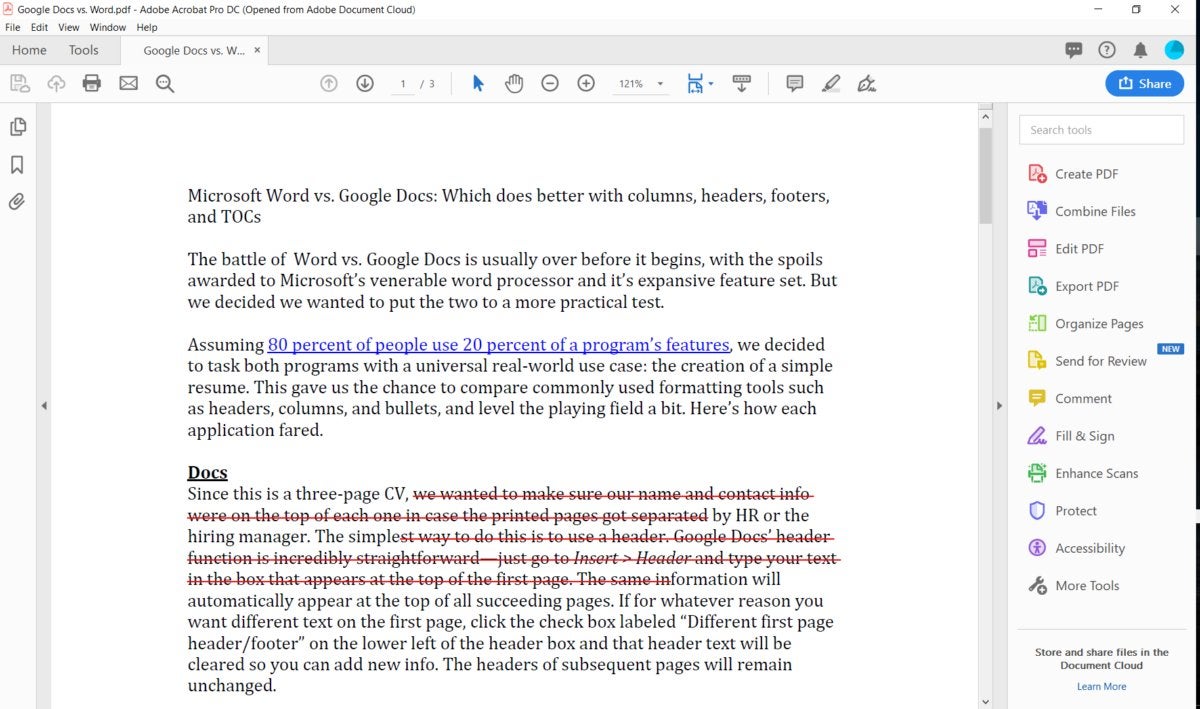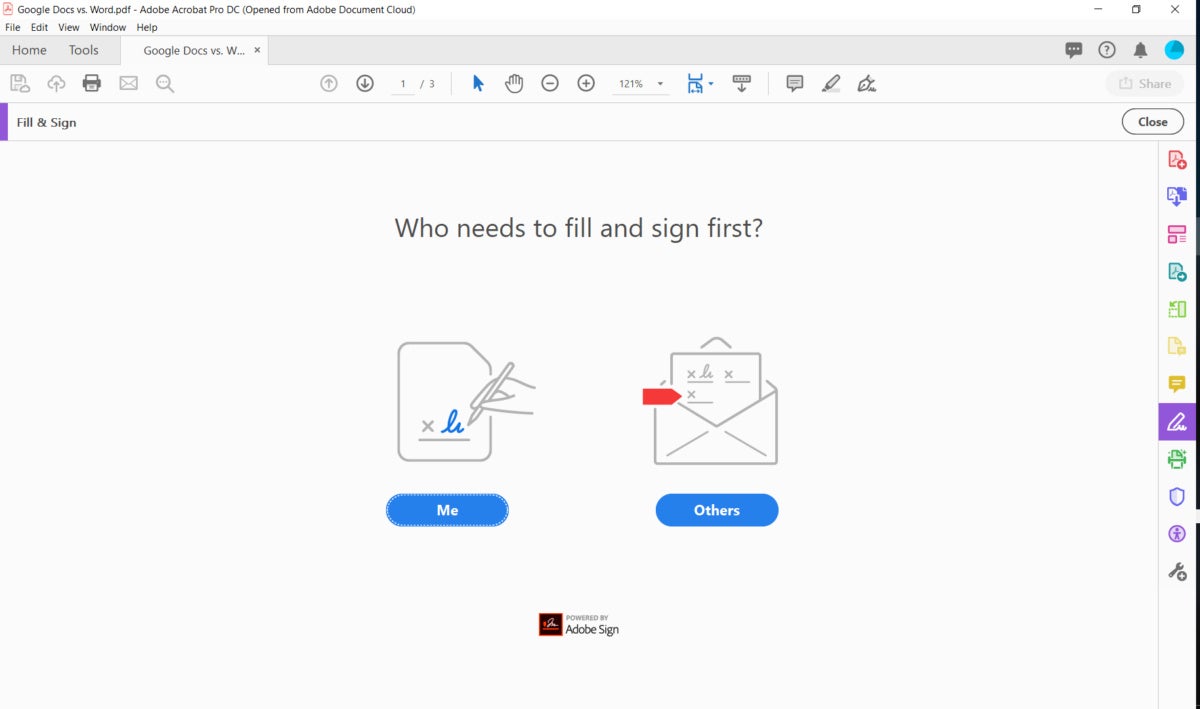 At a Glance
At a GlanceExpert's Rating
Pros
- Easily navigable tabbed interface
- Comprehensive PDF edting features
- Streamlined sharing feature makes it easier to fill documents and get signatures
Cons
- Rich feature set can be overwhelming for new users
Our Verdict
Acrobat Pro’s comprehensive PDF features show why it’s still the editor against which all others are judged.
Update: This review was updated 03/01/22 to cover the tweaks and updates Adobe has made to Acrobat Pro. The verdict remains the same.
Adobe created the PDF two decades ago and its PDF editor has continued to rule the category, despite what many users felt was its exorbitant price. But a couple of years back, Acrobat adopted a cloud subscription model that now makes it more affordable for folks without an enterprise budget.
Acrobat Pro is composed of three components: Acrobat, which allows you to perform a variety of editing functions on your PDFs on desktop and mobile devices; Adobe Document Cloud, which lets you create and export PDF files, as well as store and send files and collect electronic signatures; and Acrobat Reader, which enables you to read, print, and sign PDFs.
This review is part of our best PDF editors roundup. Go there to learn about our testing and how all the competitors performed.
Acrobat’s workspace sports an easily navigable tabbed interface. The Home tab is where you land if you don’t have a PDF open. It gives you quick access to recent files; PDFs you’ve sent for review or signature; and files stored locally, in Adobe Document Cloud, or in third-party services like Box or Microsoft OneDrive.
The Tools tab organizes Acrobat Pro’s wealth of tools in a single pane, organized by function: “Create & Edit,” “Share & Review” “Forms & Signatures,” “Protect & Standardize,” and “Customize.” Any of the individual tools can be added as a shortcut to a right sidebar so you can get to them with a PDF open without having to toggle back here. Selecting a tool opens the commands specific to it, or its associated toolbar if you are in an open document.
Each PDF file opens in its own tab in Document view. A toolbar with some basic editing tool runs across the top of the document and navigation and task panes sit at the left and right of the document, respectively.
Adobe continues to offer everything you need to work with PDFs in a business environment. You can create PDFs from a variety of file types (Microsoft Office files, images, HTML, scanned documents), send them out for comments and electronic signatures, and safeguard sensitive information with encryption, password protection, and text redaction.
Adobe recently streamlined its document sharing experience. The interface gives you the option of sending a PDF as an email attachment or as link to the file in Adobe Document Cloud. Filling and signing a document has also gotten easier, thanks to a new tool that asks you who needs to fill and sign first— you or others—and prompts you through completion of that task.
Really, if there’s anything about Acrobat Pro to knock, it’s that the sheer amount of features and how they work together can be dizzying for a first-time user. Thankfully, Adobe has added a new on-boarding experience that progressively guides you through the process of making Acrobat your default PDF editor, adding your PDF files, and introducing you to capabilities like combining PDFs and organizing pages. You can access recommended tools at any time from the Home tab and for a quick walk through. And still there are additional features you’ll undoubtedly discover through use over time.
Adobe Acrobat Pro is available for Windows and MacOS for $15 a month with an annual commitment, or about $180 a year. The paired-back Adobe Standard drops some advanced editing features and is available for Windows only for $13 per month with an annual commitment. Both come with a free seven-day trial.
Bottom line
Though many of its comprehensive features are available in other less expensive PDF editors, Acrobat remains the industry standard and that alone is reason to consider it. Its subscription-based pricing guarantees you’ll always have the latest version of the software without the hassle of purchasing an entirely new install. That’s not insignificant as Adobe regularly updates and enhances its product. (A slightly less pricey option exists in Adobe Acrobat Standard, which has some of the core functionality of the Pro version but is less robust, as we point out in our comparison of the two products.) An Acrobat Pro subscription will also unlock a host of editing features on Adobe’s Acrobat Reader app for iOS and Android. The mobile interface closely mirrors the desktop version, though scaled-down a bit, and makes working with PDFs on the smaller screen surprisingly easy.
Editor’s note: Because online services are often iterative, gaining new features and performance improvements over time, this review is subject to change in order to accurately reflect the current state of the service. Any changes to text or our final review verdict will be noted at the top of this article.






